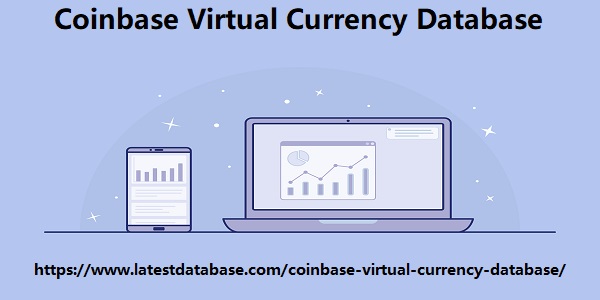Post by account_disabled on Feb 25, 2024 1:34:34 GMT -5
IPs or domains that are considered spam or unwanted by email providers and other content filtering tools. When a sender is added to a blacklist, their messages are blocked or sent directly to the recipient's spam folder. Attention! In Brazil, unfortunately, the term blacklist is still very popular to refer to this type of list blocking IP addresses and domains. Internationally, and among leading companies in the sector, there is already an effort to replace the term blacklist with the term blocklist , since the meaning and translation of blacklist is blacklist, an expression of a racist nature. The TSE even created a digital booklet with 40 racist expressions that we should stop using in the Portuguese language. Obviously, the expression “black list” appears in this booklet. Adopt this practice too! Roughly speaking, it can be said that blocklists are the SPC/Serasa of emails! These are actually lists of senders who have a “dirty name”, that is, who behaved badly in sending previous emails and were considered harassers.
Blocklists function as a way to protect email users from unwanted and potentially harmful messages such as phishing and spam. Email filtering tools consult blocklists to decide whether or not an email should be delivered to the recipient's inbox. If the sender is on a blocklist, their messages will be blocked or moved to the spam folder. This negatively affects your sender reputation and can harm the delivery of future email marketing campaigns. Email providers and other content filtering tools consult blocklists to decide whether Coinbase Virtual Currency Database or not an email should be delivered to a recipient's inbox. If a sender is frequently added to spam lists, their reputation can suffer, which can affect the delivery of their messages even to recipients who have not marked them as spam. THE MAIN BLOCKLISTS THAT APPEAR IN THE PATH OF THOSE WHO SEND EMAIL MARKETING Some of the most well-known blocklists include: Spamhaus Barracuda Sorbs SpamCop Invaluement SenderScore HOW TO KNOW IF YOUR EMAIL, IP OR DOMAIN IS ON A BLOCKLIST Blocklists are generally used to block IP addresses and domains that are known to send spam or carry out malicious activities on the internet.

However, some email providers may also maintain blocklists of email addresses that have been reported for sending spam or malicious content. The blocklists we will mention here are those that block IP addresses and domains. Blocks of specific email addresses must be handled directly with the company that manages the blocking email server. There are some tools that allow you to check if an IP or domain is on a blocklist. Some of the most popular tools include: Google To check if your domain is on a Google blocklist, you can use the “Postmaster Tools” tool. To do this, follow the following steps: Access Postmaster Tools with your Google account. Click “Add Domain” and enter the domain you want to verify. Follow the instructions to verify domain ownership. On the Postmaster Tools home page, select the domain you just added. In the “Reputation” section, you will be able to see if your domain is on a Google blocklist and what actions are recommended to resolve the issue. MX Toolbox MX Toolbox is a free blocklist lookup tool that allows you to check if a domain or IP address is on multiple blocklists.
Blocklists function as a way to protect email users from unwanted and potentially harmful messages such as phishing and spam. Email filtering tools consult blocklists to decide whether or not an email should be delivered to the recipient's inbox. If the sender is on a blocklist, their messages will be blocked or moved to the spam folder. This negatively affects your sender reputation and can harm the delivery of future email marketing campaigns. Email providers and other content filtering tools consult blocklists to decide whether Coinbase Virtual Currency Database or not an email should be delivered to a recipient's inbox. If a sender is frequently added to spam lists, their reputation can suffer, which can affect the delivery of their messages even to recipients who have not marked them as spam. THE MAIN BLOCKLISTS THAT APPEAR IN THE PATH OF THOSE WHO SEND EMAIL MARKETING Some of the most well-known blocklists include: Spamhaus Barracuda Sorbs SpamCop Invaluement SenderScore HOW TO KNOW IF YOUR EMAIL, IP OR DOMAIN IS ON A BLOCKLIST Blocklists are generally used to block IP addresses and domains that are known to send spam or carry out malicious activities on the internet.

However, some email providers may also maintain blocklists of email addresses that have been reported for sending spam or malicious content. The blocklists we will mention here are those that block IP addresses and domains. Blocks of specific email addresses must be handled directly with the company that manages the blocking email server. There are some tools that allow you to check if an IP or domain is on a blocklist. Some of the most popular tools include: Google To check if your domain is on a Google blocklist, you can use the “Postmaster Tools” tool. To do this, follow the following steps: Access Postmaster Tools with your Google account. Click “Add Domain” and enter the domain you want to verify. Follow the instructions to verify domain ownership. On the Postmaster Tools home page, select the domain you just added. In the “Reputation” section, you will be able to see if your domain is on a Google blocklist and what actions are recommended to resolve the issue. MX Toolbox MX Toolbox is a free blocklist lookup tool that allows you to check if a domain or IP address is on multiple blocklists.
